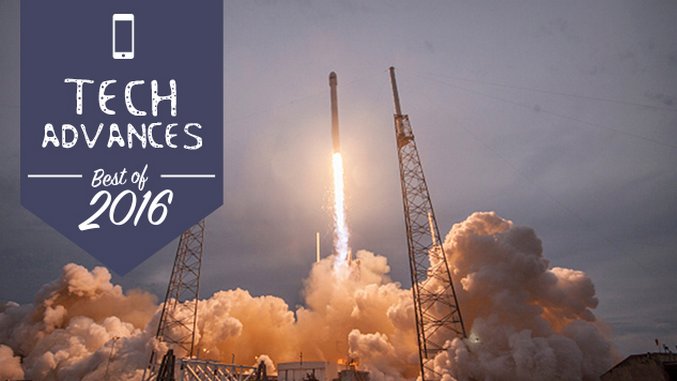
We say it every year, but technology moves forward at a breakneck
pace. Whether it’s being applied to consumer-facing products today or
research that’ll take hold in the years to come, 2016 had its fair share
of industry-shaking technology advances.
Interestingly, a bunch of the crazy forward-thinking tech that has been announced in the past couple of years actually came to life this year, which is sometimes even more exciting than whatever eccentric new idea Elon Musk has. Either way, this has once again been a big year for technology.
From batteries to space rockets, here are the 10 best technology advances of 2016:
10. The first 1TB SD card
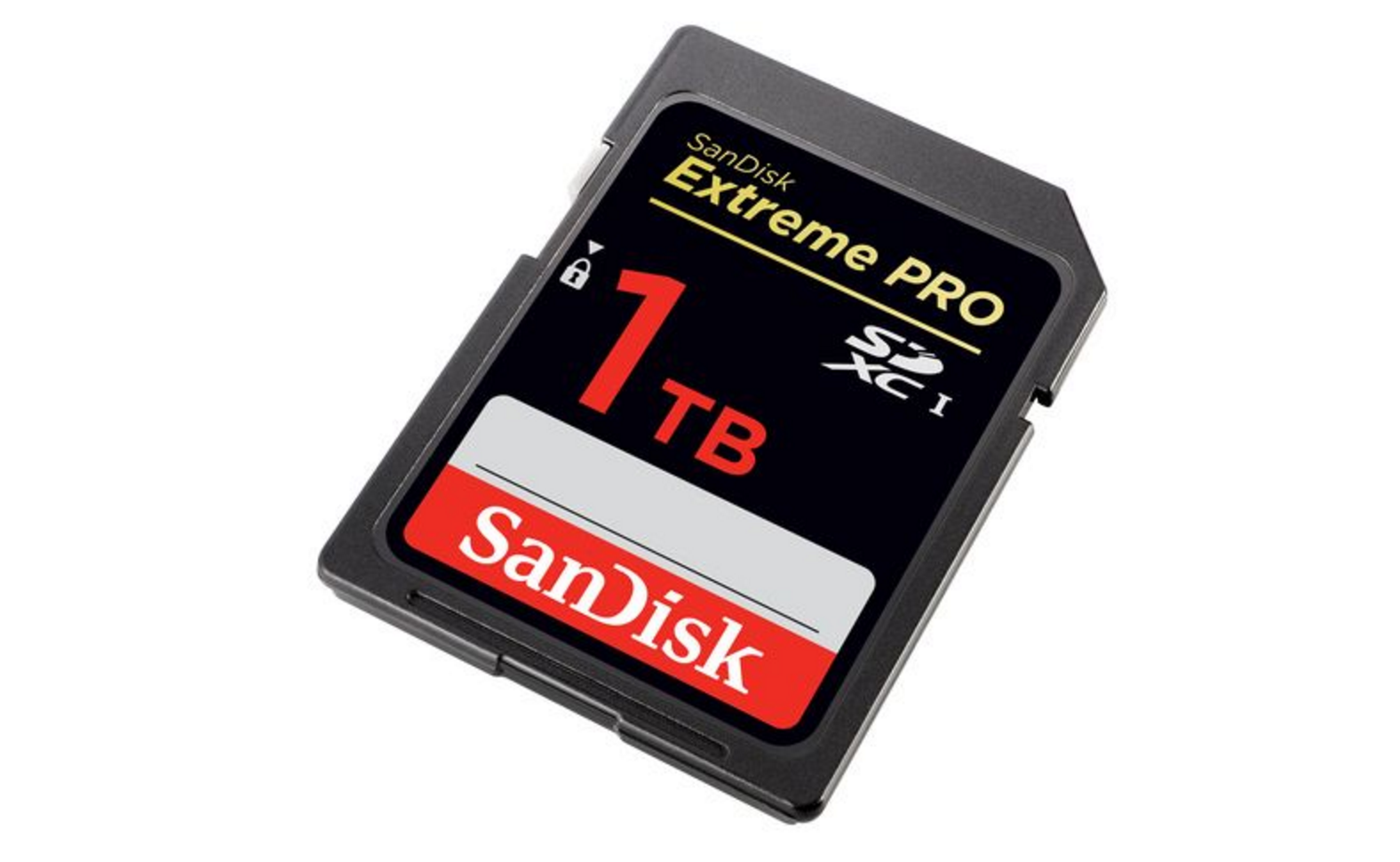
I still remember when the first 1TB USB flash drives were coming out—it wasn’t so many years ago. The fact that we can now stuff that same storage capacity in a tiny SD card is truly mind-boggling. We don’t quite know the price yet, but it won’t be cheap.
The SanDisk 512MB SD card currently goes for $345, so expect it to be significantly more than that. Storage capacity is one of those categories that is just constantly innovating and pushing forward with more and more storage in smaller packages for cheaper prices.
9. First Amazon package delivered by drone
Here’s the first on the list of previously announced tech that is actually coming to life for the first time. Amazon first introduced the idea of completely autonomous drone delivery back in 2013 with a cutesy video that seemed straight out of a science fiction novel.
But now, Amazon has announced that it’s actually completed its first delivery through its Prime Air service. From “click to delivery” it was a total of 13 minutes, which is crazy fast. You can check the video out above yourself, but the fast delivery speed was made possible thanks to Amazon’s autonomous drones and a nearby warehouse just outside of town.
8. A breakthrough in lithium-metal batteries could double efficiency
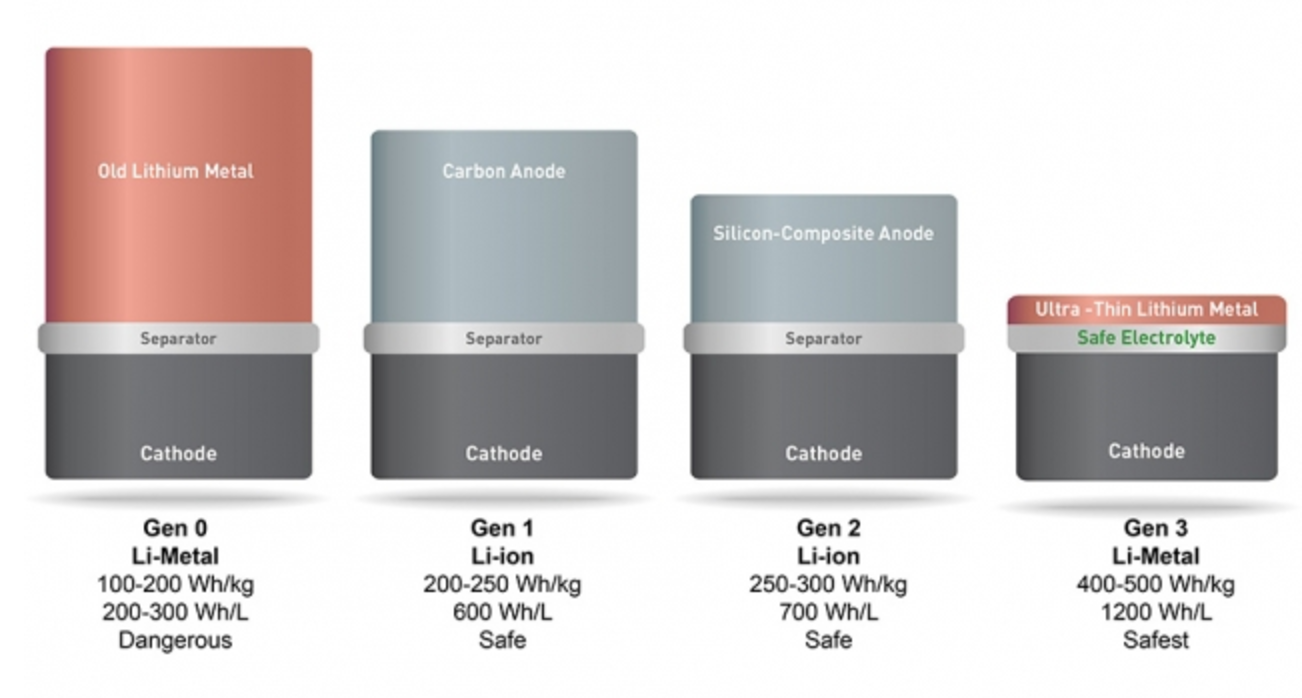
Based out of MIT, a SolidEnergy Systems has developed a “anode-free” lithium metal battery that could change the game in terms of battery efficiency. Researchers have known that these kinds of batteries are more efficient, but their tendency to explode kept them at bay. These new batteries are twice as energy dense, meaning you get the same amount of juice from a battery that’s half the size—and SolidEnergy even figured out that exploding problem.
The immediate implications for devices like smartphones and smartwatches are a no-brainer. SolidEnergy demonstrated this last year with its working prototype in an iPhone 6 that was half the size as the standard lithium-ion battery, but provided even more power. The company is now using them in drones, which will be the precursor to its move into smartphones and eventually electric cars.
7. Hyperloop one begins actual high speed test
Hyperloop is Elon Musk’s dream to see high-speed transportation transformed in America. The idea, originally published Musk’s white paper, is for a mag-lev train going from Los Angeles to San Francisco that could take you there in just 35 minutes.
Up until this Spring, the company had laid some tracks, but never actually done something in real life with the technology. While this test they did was nowhere near 750mph, it did demonstrate some of the capabilities of the open-air propulsion system, sending a test sled 100 yards down a track at 2.5Gs of acceleration. The company wants it to be passenger-ready by 2021, which still feels incredibly ambitious less than five years from today.
6. Carbon nanotube transistors outperform silicon for the first time
The tech industry runs on silicon semiconductors. They call it Silicon Valley for a reason. While carbon nanotube transistors have always been seen as the next major step in computational technology, until now it has always significantly underperformed compared to its silicon semiconductor competitors.
These tiny, single atom cylinders of carbon have the potential to power electronics with longer battery life and faster processing speeds—and now that’s finally being realized. Engineers at the University of Wisconsin-Madison have successfully achieved currents that are 1.9 times faster than silicon semiconductors. Scientists are calling it the fulfillment of a nanotechnology dream twenty years in the making.
5. Dust-sized sensors that can be implanted within the body

This might sound really creepy at first, but the technology made possible through it is endless. Engineers from Berkeley have created these sensors, which they call “neural dust.” Both commercial and medical implications of such a small sensor are exciting.
Essentially, these micro-sized sensors require no power and can be implanted directly onto a nerve or muscle fiber. The technology could power the health-monitoring Fitbits of the future, or even help treat diseases such as epilepsy and internal inflammation by “stimulating” nerves and muscles.
4. SolarCity opens Buffalo facility, Tesla opens Gigafactory 1

Elon Musk is a man with a plan. No really—he calls it the “The Secret Tesla Motors Master Plan,” which just happens to include saving us from our dependence on “mine and burn” energy. He’s the man behind both SolarCity and Tesla (which have now officially come together under the Telsa roof as of August) and is now opening two major production facilities under the banner of each company.
First is the Buffalo SolarCity facility, which will become the biggest producer of solar panels in this hemisphere and completed construction this year. Second is the Gigafactory 1 opening up in Nevada, which is responsible for producing lithium-ion batteries, as well as Telsa motors. The significant thing is that Musk practices what the preaches: both facilities are powered by renewable energy sources with the goal of achieving net-zero energy. These facilities will not only power the all-important companies that they serve, but could also be the future of what American production looks like.
3. Eternal nano-structured data recording
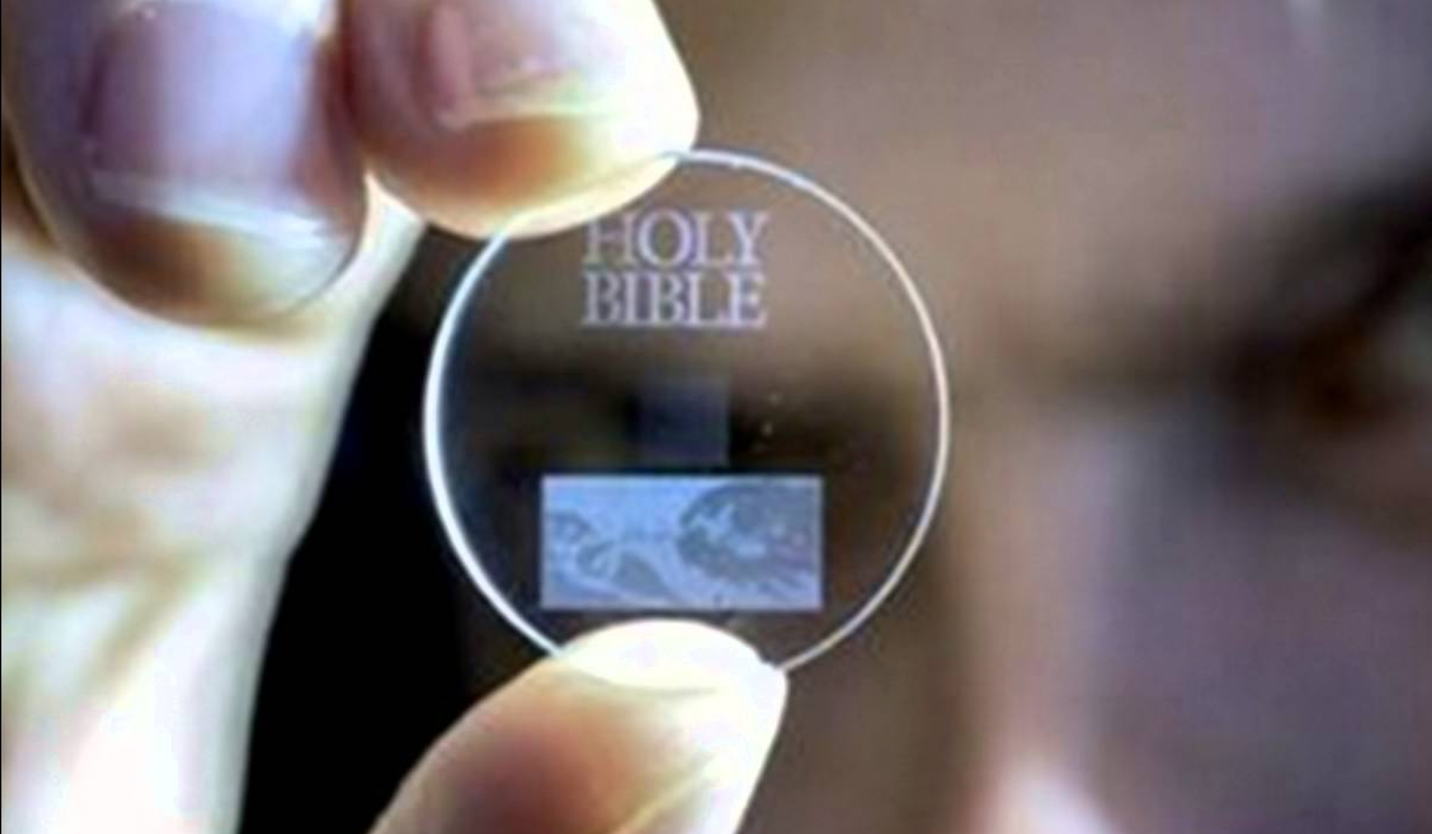
This one is going to require some imagination, but try to wrap your mind around the technology that is being advanced here. Using nano-structured glass, scientists have developed a way to both record and retrieve digital data in 5D. The idea here is that long after humanity is gone, this data could potentially be stored and retrieved.
So far, they’ve gone as far as writing documents such as the Universal Declaration of Human Rights (UDHR), Newton’s Opticks, Magna Carta, and Kings James Bible. How is it eternal though? Well—here are the specs of this eternal data: 360 TB/disc data capacity, thermal stability up to 1,000 degrees Celsius and an almost unlimited lifetime at room temperature (13.8 billion years at 190 degrees Celsius). It’s been called the “Superman memory crystal,” which isn’t far off.
2. SpaceX landed a rocket vertically in the ocean
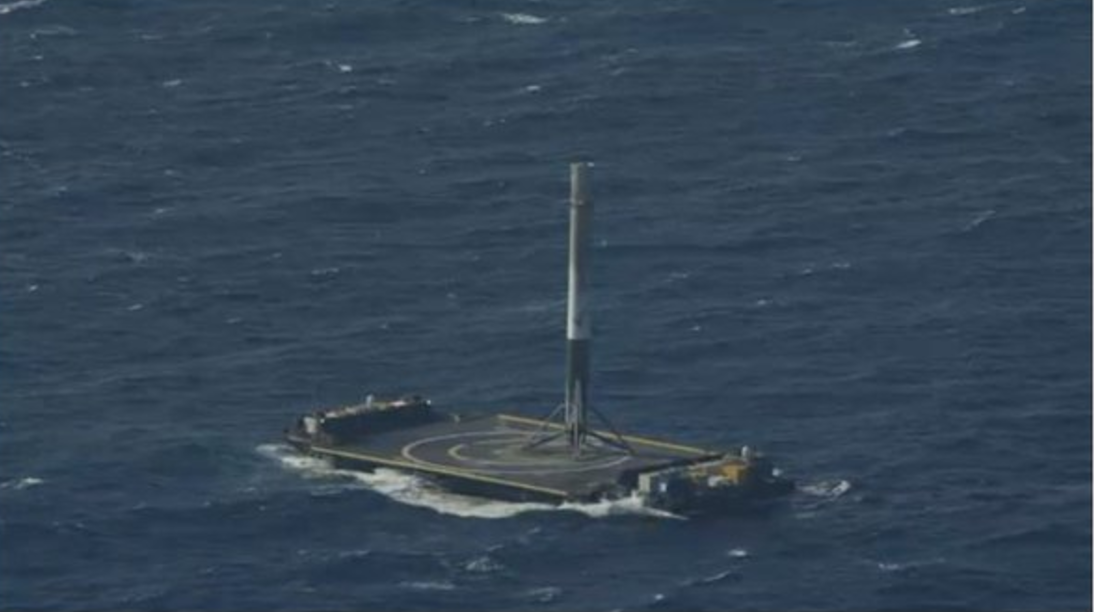
Though it’s now the second time SpaceX has landed one of its rockets, Musk’s commercial space company successfully landed the Falcon 9 in the ocean. After four failed attempts throughout the year where the rocket exploded upon its landing, it was beginning to look like SpaceX had finally reached a serious hurdle.
These ocean landings are harder than a normal ground landing, mostly because it’s a small target, but are much more efficient fuel and cost-wise. In the end, efficiency is really what all these landings are about, since most rockets are either destroyed or lost post-launch as of now. These reusable rockets could end up being the factor that paves the way to affordable commercial space flight.
1. Google’s Tensor Processing Unit Pushes Machine Learning, Beats Go Champion
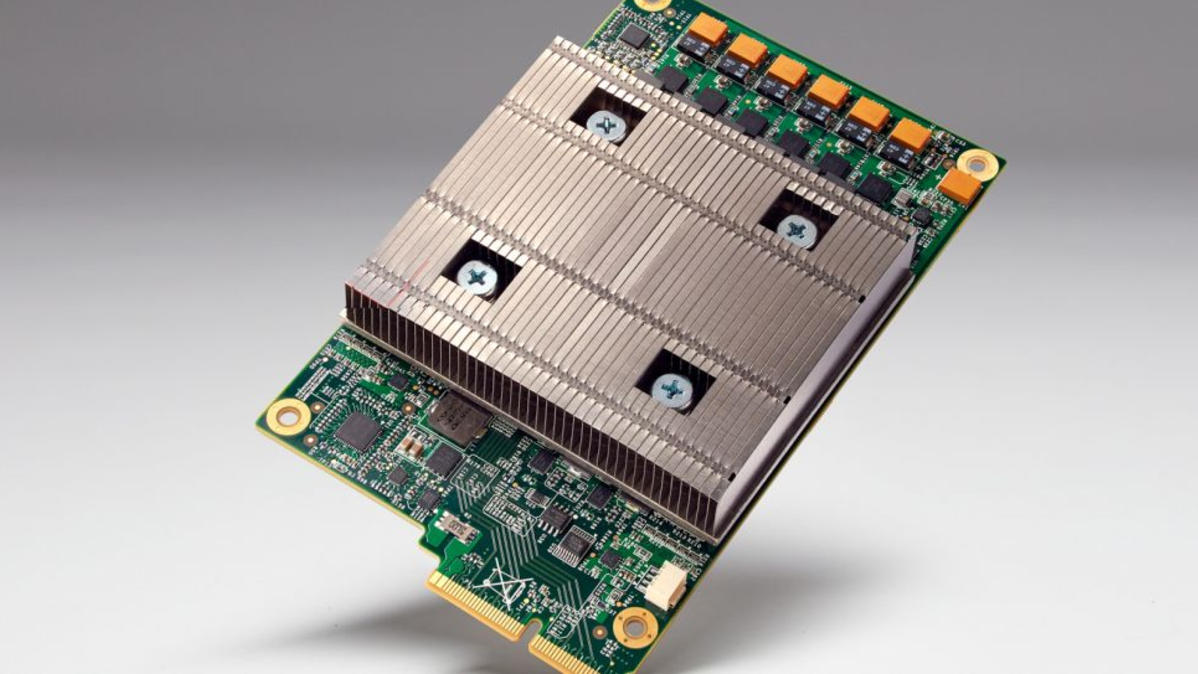
Artificial intelligence has another notch on its belt against humans. First it was chess, now it’s Go. But the real story here isn’t just a computer that can beat the world champion in humanity’s most strategic game—it’s the tensor processing unit (TPU) and Machine Learning. The TPU is an application-specific chip that Google has created for the specific purpose of accelerating machine learning.
The company has proven once again that it’s all-in on artificial intelligence and developing machine learning that keeps getting better. The particular computer that beat the Go champion was developed by DeepMind, an AI company Google acquired back in 2014. But the TPU is only a tool for Google’s big picture strategy.
At the press event in which the Google Pixel smartphone was announced, CEO Sundar Pichai spent nearly half the event talking about the Google Assistant, a conversational, machine learning-powered assistant. What we’re talking about here is computers that can do things beyond what they were explicitly programmed to do. There are plenty of reasons to be afraid of that, but also plenty of reasons to be excited about the possibilities.
https://www.pastemagazine.com/articles/2016/12/the-10-best-technology-advances-of-2016.html
Interestingly, a bunch of the crazy forward-thinking tech that has been announced in the past couple of years actually came to life this year, which is sometimes even more exciting than whatever eccentric new idea Elon Musk has. Either way, this has once again been a big year for technology.
From batteries to space rockets, here are the 10 best technology advances of 2016:
10. The first 1TB SD card

I still remember when the first 1TB USB flash drives were coming out—it wasn’t so many years ago. The fact that we can now stuff that same storage capacity in a tiny SD card is truly mind-boggling. We don’t quite know the price yet, but it won’t be cheap.
The SanDisk 512MB SD card currently goes for $345, so expect it to be significantly more than that. Storage capacity is one of those categories that is just constantly innovating and pushing forward with more and more storage in smaller packages for cheaper prices.
9. First Amazon package delivered by drone
Here’s the first on the list of previously announced tech that is actually coming to life for the first time. Amazon first introduced the idea of completely autonomous drone delivery back in 2013 with a cutesy video that seemed straight out of a science fiction novel.
But now, Amazon has announced that it’s actually completed its first delivery through its Prime Air service. From “click to delivery” it was a total of 13 minutes, which is crazy fast. You can check the video out above yourself, but the fast delivery speed was made possible thanks to Amazon’s autonomous drones and a nearby warehouse just outside of town.
8. A breakthrough in lithium-metal batteries could double efficiency

Based out of MIT, a SolidEnergy Systems has developed a “anode-free” lithium metal battery that could change the game in terms of battery efficiency. Researchers have known that these kinds of batteries are more efficient, but their tendency to explode kept them at bay. These new batteries are twice as energy dense, meaning you get the same amount of juice from a battery that’s half the size—and SolidEnergy even figured out that exploding problem.
The immediate implications for devices like smartphones and smartwatches are a no-brainer. SolidEnergy demonstrated this last year with its working prototype in an iPhone 6 that was half the size as the standard lithium-ion battery, but provided even more power. The company is now using them in drones, which will be the precursor to its move into smartphones and eventually electric cars.
7. Hyperloop one begins actual high speed test
Hyperloop is Elon Musk’s dream to see high-speed transportation transformed in America. The idea, originally published Musk’s white paper, is for a mag-lev train going from Los Angeles to San Francisco that could take you there in just 35 minutes.
Up until this Spring, the company had laid some tracks, but never actually done something in real life with the technology. While this test they did was nowhere near 750mph, it did demonstrate some of the capabilities of the open-air propulsion system, sending a test sled 100 yards down a track at 2.5Gs of acceleration. The company wants it to be passenger-ready by 2021, which still feels incredibly ambitious less than five years from today.
6. Carbon nanotube transistors outperform silicon for the first time
The tech industry runs on silicon semiconductors. They call it Silicon Valley for a reason. While carbon nanotube transistors have always been seen as the next major step in computational technology, until now it has always significantly underperformed compared to its silicon semiconductor competitors.
These tiny, single atom cylinders of carbon have the potential to power electronics with longer battery life and faster processing speeds—and now that’s finally being realized. Engineers at the University of Wisconsin-Madison have successfully achieved currents that are 1.9 times faster than silicon semiconductors. Scientists are calling it the fulfillment of a nanotechnology dream twenty years in the making.
5. Dust-sized sensors that can be implanted within the body

This might sound really creepy at first, but the technology made possible through it is endless. Engineers from Berkeley have created these sensors, which they call “neural dust.” Both commercial and medical implications of such a small sensor are exciting.
Essentially, these micro-sized sensors require no power and can be implanted directly onto a nerve or muscle fiber. The technology could power the health-monitoring Fitbits of the future, or even help treat diseases such as epilepsy and internal inflammation by “stimulating” nerves and muscles.
4. SolarCity opens Buffalo facility, Tesla opens Gigafactory 1

Elon Musk is a man with a plan. No really—he calls it the “The Secret Tesla Motors Master Plan,” which just happens to include saving us from our dependence on “mine and burn” energy. He’s the man behind both SolarCity and Tesla (which have now officially come together under the Telsa roof as of August) and is now opening two major production facilities under the banner of each company.
First is the Buffalo SolarCity facility, which will become the biggest producer of solar panels in this hemisphere and completed construction this year. Second is the Gigafactory 1 opening up in Nevada, which is responsible for producing lithium-ion batteries, as well as Telsa motors. The significant thing is that Musk practices what the preaches: both facilities are powered by renewable energy sources with the goal of achieving net-zero energy. These facilities will not only power the all-important companies that they serve, but could also be the future of what American production looks like.
3. Eternal nano-structured data recording

This one is going to require some imagination, but try to wrap your mind around the technology that is being advanced here. Using nano-structured glass, scientists have developed a way to both record and retrieve digital data in 5D. The idea here is that long after humanity is gone, this data could potentially be stored and retrieved.
So far, they’ve gone as far as writing documents such as the Universal Declaration of Human Rights (UDHR), Newton’s Opticks, Magna Carta, and Kings James Bible. How is it eternal though? Well—here are the specs of this eternal data: 360 TB/disc data capacity, thermal stability up to 1,000 degrees Celsius and an almost unlimited lifetime at room temperature (13.8 billion years at 190 degrees Celsius). It’s been called the “Superman memory crystal,” which isn’t far off.
2. SpaceX landed a rocket vertically in the ocean

Though it’s now the second time SpaceX has landed one of its rockets, Musk’s commercial space company successfully landed the Falcon 9 in the ocean. After four failed attempts throughout the year where the rocket exploded upon its landing, it was beginning to look like SpaceX had finally reached a serious hurdle.
These ocean landings are harder than a normal ground landing, mostly because it’s a small target, but are much more efficient fuel and cost-wise. In the end, efficiency is really what all these landings are about, since most rockets are either destroyed or lost post-launch as of now. These reusable rockets could end up being the factor that paves the way to affordable commercial space flight.
1. Google’s Tensor Processing Unit Pushes Machine Learning, Beats Go Champion

Artificial intelligence has another notch on its belt against humans. First it was chess, now it’s Go. But the real story here isn’t just a computer that can beat the world champion in humanity’s most strategic game—it’s the tensor processing unit (TPU) and Machine Learning. The TPU is an application-specific chip that Google has created for the specific purpose of accelerating machine learning.
The company has proven once again that it’s all-in on artificial intelligence and developing machine learning that keeps getting better. The particular computer that beat the Go champion was developed by DeepMind, an AI company Google acquired back in 2014. But the TPU is only a tool for Google’s big picture strategy.
At the press event in which the Google Pixel smartphone was announced, CEO Sundar Pichai spent nearly half the event talking about the Google Assistant, a conversational, machine learning-powered assistant. What we’re talking about here is computers that can do things beyond what they were explicitly programmed to do. There are plenty of reasons to be afraid of that, but also plenty of reasons to be excited about the possibilities.
https://www.pastemagazine.com/articles/2016/12/the-10-best-technology-advances-of-2016.html
No comments:
Post a Comment